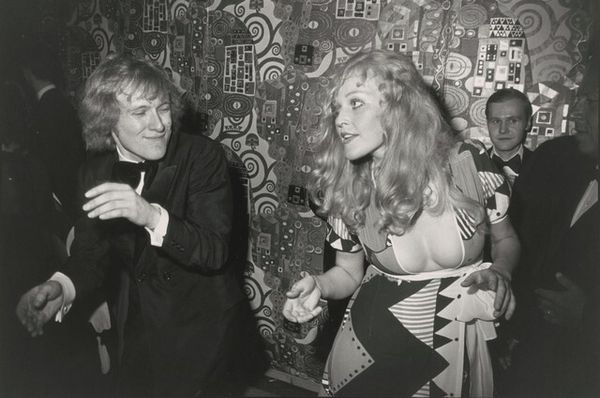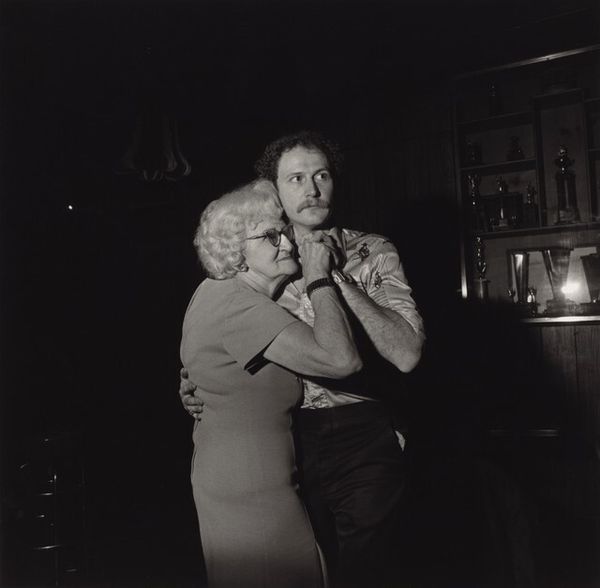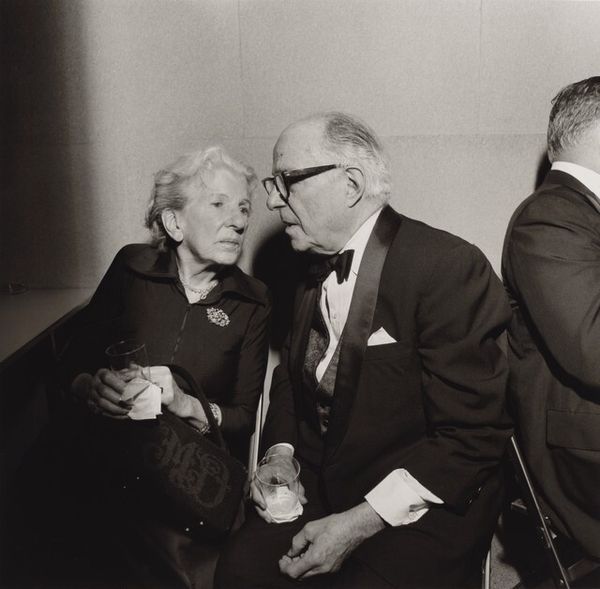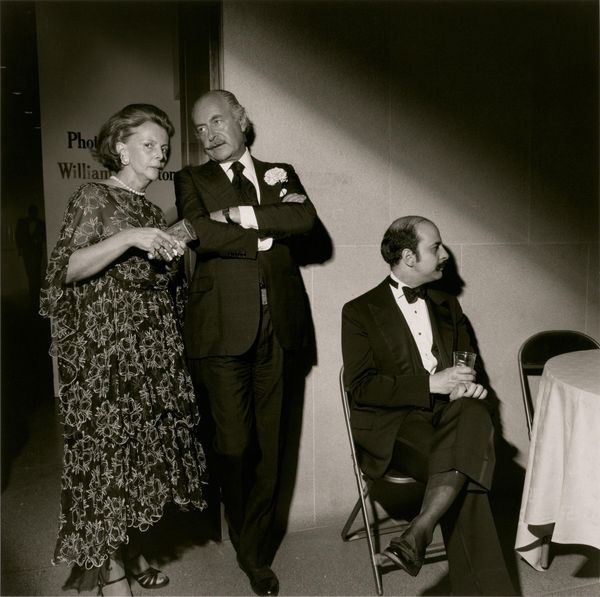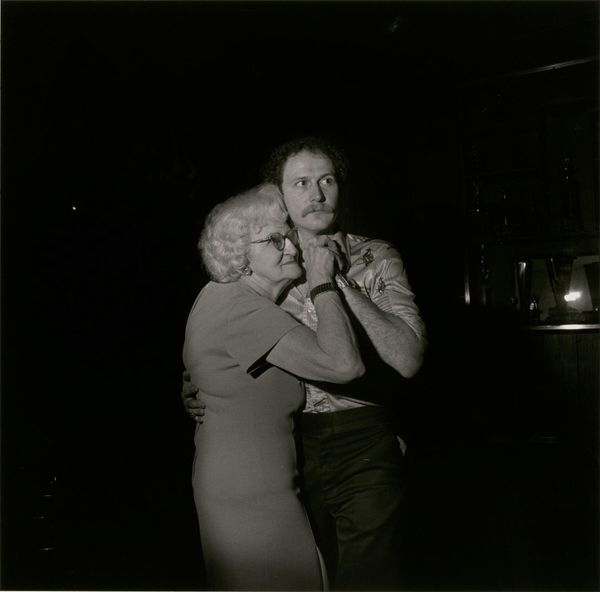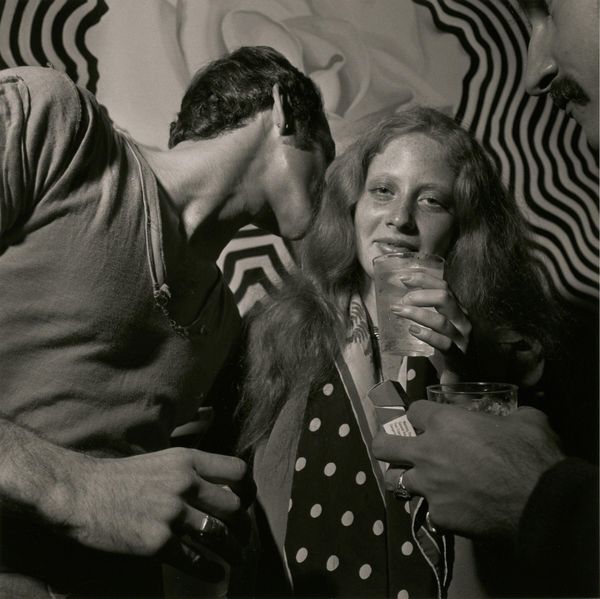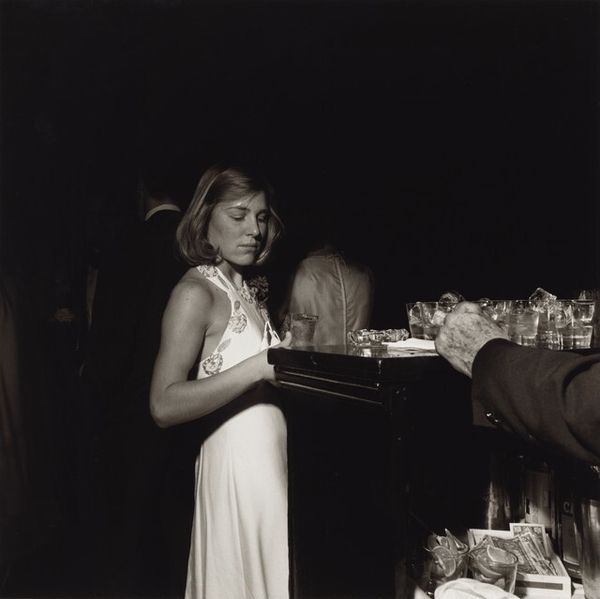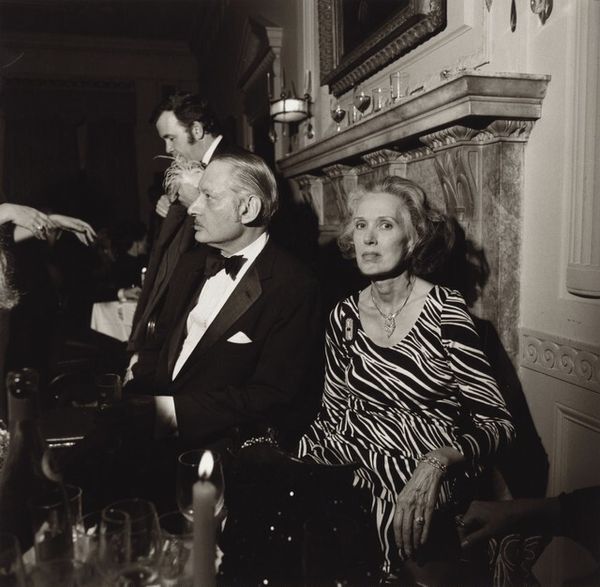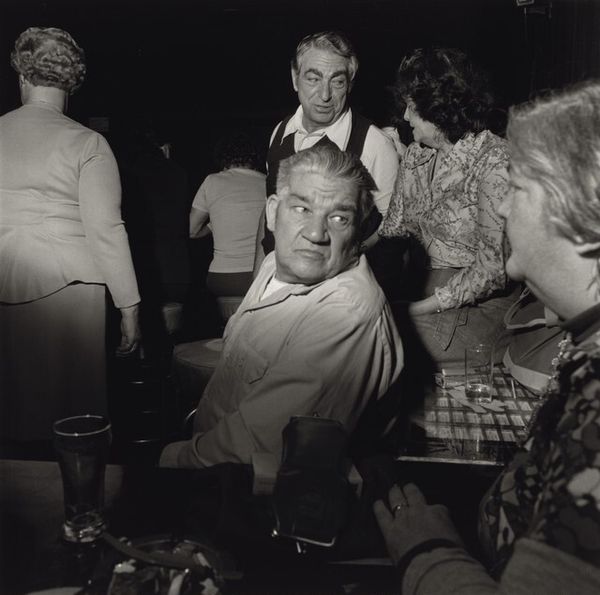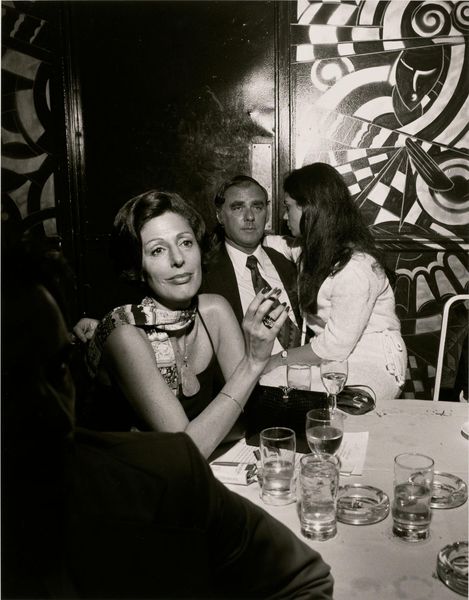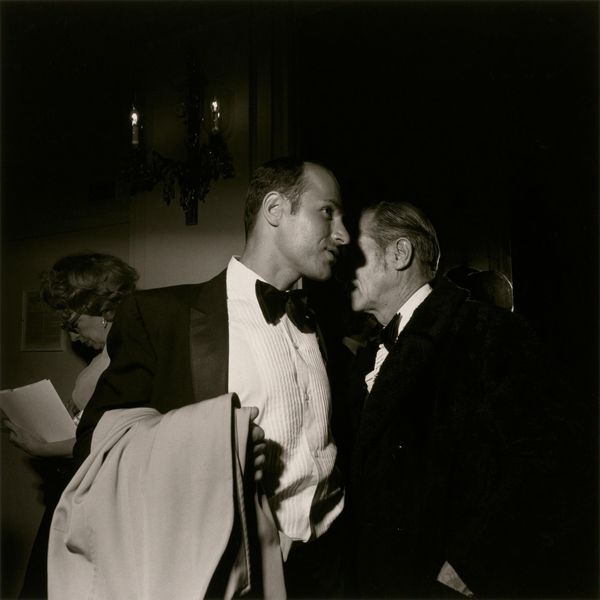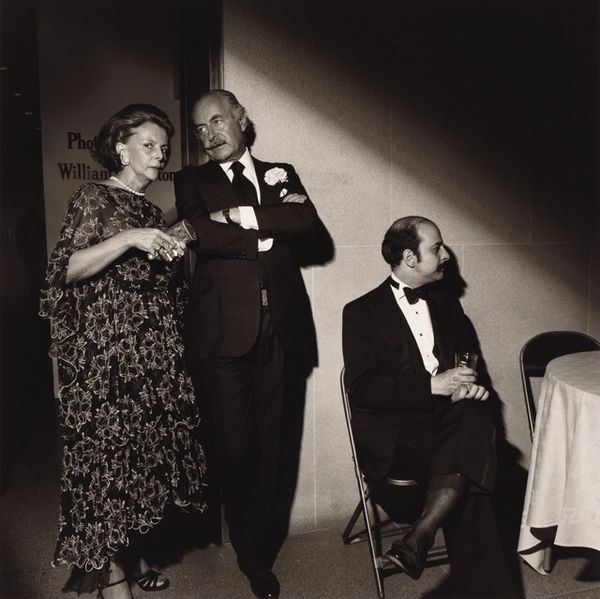
Dimensions: image: 36.1 × 36.1 cm (14 3/16 × 14 3/16 in.) sheet: 50.4 × 40.4 cm (19 13/16 × 15 7/8 in.)
Copyright: National Gallery of Art: CC0 1.0
Curator: Larry Fink's "Gallery Opening, New York City," taken in 1974. What's your initial take? Editor: Intriguing! There's something immediately unsettling, even a bit confrontational, about the composition. The sharp focus isolates the subjects, making them feel almost invasively observed. The grainy texture adds to that sense of raw intimacy, doesn't it? Curator: Precisely. Consider the formal strategies at play. The dramatic lighting carves the subjects from the deep background, heightening the tonal contrasts and intensifying the emotional atmosphere. Editor: Let's not forget the material circumstances, though. It is a gelatin-silver print—a specific choice that links this work to the materiality of its time, the labor involved in developing the print itself. Do you see the grain? That’s not just about aesthetics—it reveals the photographic process. These prints are unique and hand-crafted. It reminds us of the tangible and the indexical relationship of the photograph to the subjects portrayed. Curator: Of course, the process contributes significantly to the final artifact. It captures a very specific segment of society attending this New York City opening. It emphasizes gesture and immediate presence—the way they dress, drink, posture—it reveals much more than a posed portrait could. We see the nuances within fleeting moments. And the tension created in the balance between light and dark—it reflects anxieties that lurk behind glamorous scenes. Editor: Absolutely. I also appreciate how Fink disrupts established norms of portraiture. He avoids idealized representations, offering us figures caught off guard, imperfect. His photographs of everyday life were shown along society shots highlighting socioeconomic inequalities and forcing the art world to confront its realities. His material approach created a new realism. Curator: It is a statement on the gaze, the voyeurism inherent in photography, challenging conventional modes of spectatorship. We find a study of texture and mood to create emotional meaning that resonates far beyond this gallery space, right? Editor: Yes, I’m interested in how the material conditions and creative choices work together, transforming an image of an elite New York gallery into a meditation on society itself. Curator: I agree. We can conclude this piece demonstrates both aesthetic choices and social consciousness.
Comments
No comments
Be the first to comment and join the conversation on the ultimate creative platform.
